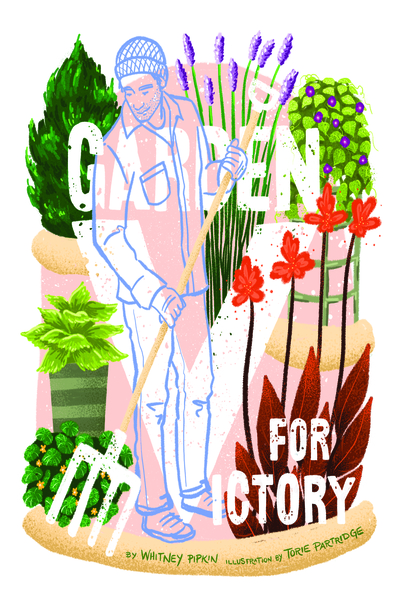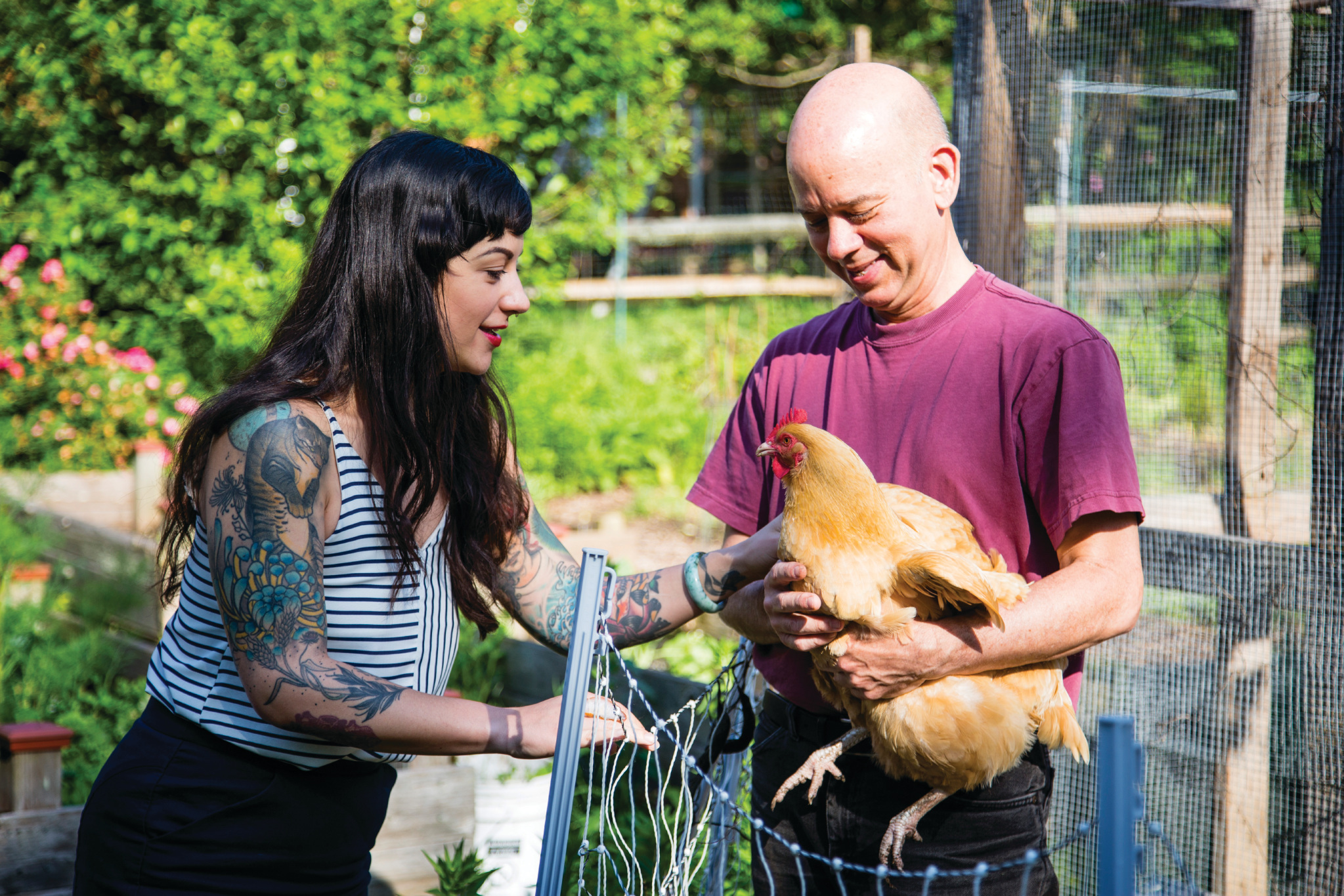Heirloom Inspiration from the Smithsonian's Secret Garden
/By Whitney Pipkin
The next time visitors you’re hosting want to see the Smithsonian National Museum of American History again, don’t bother going inside.
Instead, head over to the east lawn of the building to glean plenty of history—and food-growing wisdom—from the immaculate Victory Garden and its knowledgeable keeper, horticulturist Joe Brunetti.
Unlike the neglected one floundering in pots on your back porch (just me?), this garden harkens to a time when growing food was more necessity than hobby. Planted across the country during World War II, Victory Gardens made good use of empty lots and grassy front yards as civilians worked to ensure an adequate food supply for troops abroad and at home.
“I’ve read that World War II Victory Gardens were the largest volunteer movement that has ever been seen,” Brunetti says during a walk through the garden, where visitors can often find him pruning or harvesting herbs for the museum’s Stars & Stripes Café. “Nobody has ever fought that statement, and I could believe it based on the stats.”
More than 20 million Victory Gardens supplied close to 40% of the country’s food during a peak in 1943, Brunetti adds.
At the garden he runs in memory of that era, production isn’t as important as poignancy. Sesame seeds and bird peppers find a place not because they’re a necessity but because they have a story to tell. Lush cardoons and purple hyacinth beans add beauty and dimension to the landscape, while strongly scented herbs help drive pests away—instead of the chemicals they used in the 1940s.
“Most Victory Garden pamphlets that I’ve read say, basically, ‘If you see a bug, nuke it,’” says Brunetti, who keeps a “Murder flying pests” poster in the garden’s shed for posterity. “Now, we try to attract beneficial insects to control pests, or other methods.”
Though almost all the varieties planted in the Victory Garden would have been available during World War II (the better-tasting Cascadian hops notwithstanding), the pressures Brunetti faces to grow them have stood the test of time. Birds and squirrels like to wait until his Arkansas Traveler tomatoes are nearly ripe to peck a hole in them or drink their juice. Invasive bug species lay eggs on the underside of leafy greens and nibble on the hibiscus blooms.
But the Victory Gardeners would have faced those, too, without the help of modern varieties, so it feels fitting.
We talked to Brunetti about what this blast-from-the-past garden still has to teach us.
Edible DC: What do people ask you when they’re wandering in the Victory Garden?
Joe Brunetti: I get a lot of questions like, “Did people actually grow sesame seeds in their Victory Gardens?”
We have it here. Yes, it existed and people had the option of getting seeds and growing it. But were people really worried about supplying sesame plants for their families? No.
I also get people saying, “I didn’t know it grew like that,” and then I get to tell them the story: When the pods turn brown the plant spills its seeds, which is where the term “Open sesame” came from. But modern varieties are bred to keep their seeds in place.
That’s how I draw people in to get them thinking about gardens. Then they’re, like, “What else is there?”
EDC: What unique opportunities come with running a garden at the Smithsonian?
JB: Well, we grew Cascade hops in the garden this year, and we have a beer historian inside. She is working with Charlie Papazian, who is the godfather of home brewing in this country. He started the Home Brewers Association and wrote this book that is a bible for home brewers.
He donated some of his products to the museum, and I gave him a tour and said, “Wouldn’t it be cool if we harvested our hops and he did something with them?”
So we did. He’s brewing a special beer with our Smithsonian garden hops that we’ll serve at an event in December.
EDC: Have you had people who lived through World War II visit the Victory Garden?
JB: Yeah, in the past. They’d be in their 80s and 90s. When they hear about it being a Victory Garden, they get more nostalgic about the memories of that time and the stories being told through the plants. They really just appreciate that it’s still being talked about.
When they see us growing some of the crops—if I’m growing, say, a type of tomato that somebody during the war was growing—it’s just the nostalgia, the happy memory of it.
And most people love talking about canning. That was a huge learning curve: How do you take all this food we’re growing and how do I get my family through the winter? Cabbage, potatoes, gourds were all key. And then the tomatoes and beans had to be canned. I think the canning stuck with people, because there was a very real fear of contaminating your family, or not being able to feed them.
EDC: Was the Victory Garden era the peak of American gardening culture?
JB: Yeah, food security was big. A big part of the gardens was being able to free up enough food to send some to our troops and Allies, and then every man, woman and child could contribute to the war effort by planting their own garden in their backyard or on their balcony.
It could be as small as one tomato plant in a pot on the fifth floor in New York City, or it could be a multi-hundred-acre farm. The size didn’t matter, it just mattered that you were trying to contribute and grow your own food.
EDC: How do you define heirlooms for your purposes?
JB: The beauty of heirlooms is not only do they tell all these stories, but we’re keeping that genetic diversity alive.
It gets tough to define, though. If a plant is open pollinated, you can call it an heirloom by the true definition. Some people say it has to be 50 or 100 years old.
I don’t like dates because if you’re putting a certain date cutoff, every year we advance. What’s happening to that cutoff date?
There can be something that’s technically an heirloom because it’s open pollinated, but it came out in the ’80s. Like the Green Zebra tomato. People think that’s super old, because it’s technically an heirloom.
It turns out, the word heirloom is very loaded.







